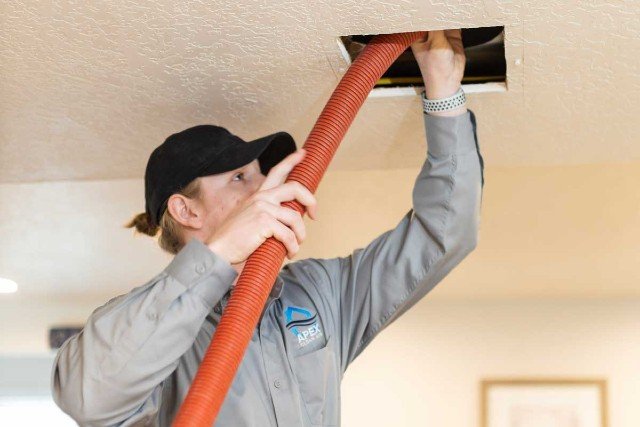Proper vent cleaning is often overlooked, yet it plays a vital role in ensuring safety, efficiency, and overall well-being in homes and workplaces. Ignoring ventilation maintenance can lead to serious hazards, from carbon monoxide buildup to pest infestations.
Here’s a guide on how regular cleaning keeps ventilation systems functioning optimally and helps prevent avoidable risks.
Best Practices for Vent Cleaning
While professional vent cleaning is recommended at least once a year, homeowners and business owners can take simple steps to maintain vents between professional services. These include regularly vacuuming vent covers, ensuring outdoor vent openings are clear of debris, and checking for signs of blockages, such as weak airflow or unusual noises coming from ducts.
Keeping an eye on these factors can prevent minor issues from escalating into major problems. For professional assistance with vent cleaning, consider reaching out to Denver dryer vent cleaning, which ensures your ventilation system remains free of hazardous debris and operates efficiently.
Reducing Carbon Monoxide Risks
One often-overlooked danger of unclean vents is the potential for carbon monoxide buildup. Gas appliances, including furnaces and water heaters, rely on vents to expel harmful gases. If these vents become clogged with dirt or debris, dangerous gases can back up into living spaces, leading to carbon monoxide poisoning. This colorless, odorless gas is deadly in high concentrations, making regular vent inspections and cleanings crucial for safety.
Preventing Pest Infestations
Blocked or neglected vents can attract pests such as rodents, birds, and insects looking for a warm and undisturbed nesting space. Once inside, these pests can create further blockages with nests, droppings, and debris, reducing air circulation and increasing the risk of disease. Additionally, rodents can chew through ductwork, leading to costly repairs and further contamination of indoor air. Keeping vents clean and sealed helps prevent unwanted pests from making themselves at home.
Minimizing Musty Odors and Moisture Problems
A common yet underappreciated consequence of dirty vents is the presence of unpleasant odors. Dust, mold, and other organic matter trapped in ducts can produce musty or stale smells that circulate throughout a building. Excess moisture buildup in vents can also lead to mildew, which further contributes to poor indoor air quality and lingering odors. Regular vent maintenance ensures fresh, clean airflow, eliminating unpleasant smells at the source.
Enhancing Workplace and Home Safety
In workplaces, neglected ventilation systems can cause compliance issues, especially in environments where air quality standards are regulated. Poorly maintained vents can lead to reduced air exchange, increasing the likelihood of airborne contaminants accumulating indoors. Employees may experience fatigue, headaches, or irritation due to insufficient ventilation, affecting productivity and overall well-being. Ensuring vents are clean helps maintain a safe and comfortable work environment.
At home, dirty vents can pose additional risks, especially in households with young children, elderly individuals, or those with respiratory conditions. Poor ventilation can contribute to stale air and higher concentrations of airborne particles, making it harder to breathe comfortably. Regular cleaning ensures a healthier indoor environment for everyone.
Extending the Life of Ventilation Equipment
Neglected vents put unnecessary strain on HVAC (heating, ventilation, and air conditioning) systems, forcing them to work harder to push air through blockages. Over time, this extra effort leads to wear and tear on the system’s components, potentially shortening its lifespan. Routine vent cleaning allows air to flow more freely, reducing mechanical stress and helping HVAC systems last longer without frequent repairs or premature replacements.
Conclusion
Neglecting vent maintenance can lead to a variety of hazards, from carbon monoxide exposure to pest infestations and odor problems. Regular cleaning not only enhances air quality but also improves safety, energy efficiency, and equipment longevity.
Whether in a home or workplace, taking proactive steps to keep vents clean ensures a healthier, safer, and more comfortable environment for everyone.




